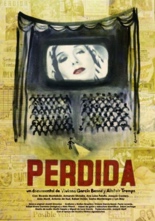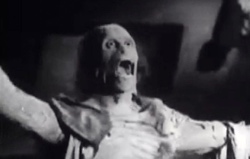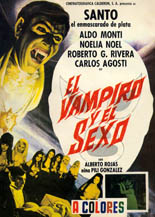
 As a boy, I would’ve loved to have grown up in a family of naked women, robot monsters, Aztec mummies and masked wrestlers. But I’m not Viviana García-Besné.
As a boy, I would’ve loved to have grown up in a family of naked women, robot monsters, Aztec mummies and masked wrestlers. But I’m not Viviana García-Besné.
In Perdida, whose title translates to “lost,” the filmmaker documents three years of learning about — and then coming to grips with — her grandfather and great uncles’ involvement in arguably some of Mexico’s worst movies ever made. That suspect group includes a subgenre known as “ficheras”: raunchy, cabaret-set comedies featuring voluptuous women in various stages of disrobing. They made a fortune, were branded as “pornography,” and then killed the country’s film industry. Go figure.
 Through interviews with surviving family members of the Calderón film dynasty, she attempts to ferret fact from fiction; dusty home movies and handwritten letters help fill in the gaps, as does a third-act raid of a film vault.
Through interviews with surviving family members of the Calderón film dynasty, she attempts to ferret fact from fiction; dusty home movies and handwritten letters help fill in the gaps, as does a third-act raid of a film vault.
From theater owners to full-fledged moviemakers beginning in the 1930s, the Calderón brothers’ story is one of rags to riches to rags. The riches come after the men discover the inherent value of female nudity, both to fill seats and to create controversy to fill more seats. The profits proved as substantial as the bosoms.
 The brothers’ crooked, oft-controversial path is paved with acts of monopoly, infidelity and forgery, involving personalities like the revolutionary Pancho Villa, actress Lupe Vélez, mambo king Perez Prado, Fantasy Island’s Ricardo Montalban and the pope.
The brothers’ crooked, oft-controversial path is paved with acts of monopoly, infidelity and forgery, involving personalities like the revolutionary Pancho Villa, actress Lupe Vélez, mambo king Perez Prado, Fantasy Island’s Ricardo Montalban and the pope.
Unsavory cinema aside, the Calderón name also appeared on many entries in horror, science fiction and just plain bizarre. B-movie enthusiasts are likely to know many of the titles Perdida discusses, from the bargain-basement Aztec Mummy trilogy and 1959’s notorious Santa Claus to a franchise starring the silver-masked luchador Santo.
A high point occurs with García-Besné’s search for a then-lost Calderón film, El Vampiro y El Sexo, aka Santo in the Treasure of Dracula. That’s about as dramatic as Perdida gets; her documentary is personal and lo-fi, so it’s stripped of traditional storytelling structure, but its interest to film buffs — especially those with tastes toward the psychotronic — is undeniable. —Rod Lott
